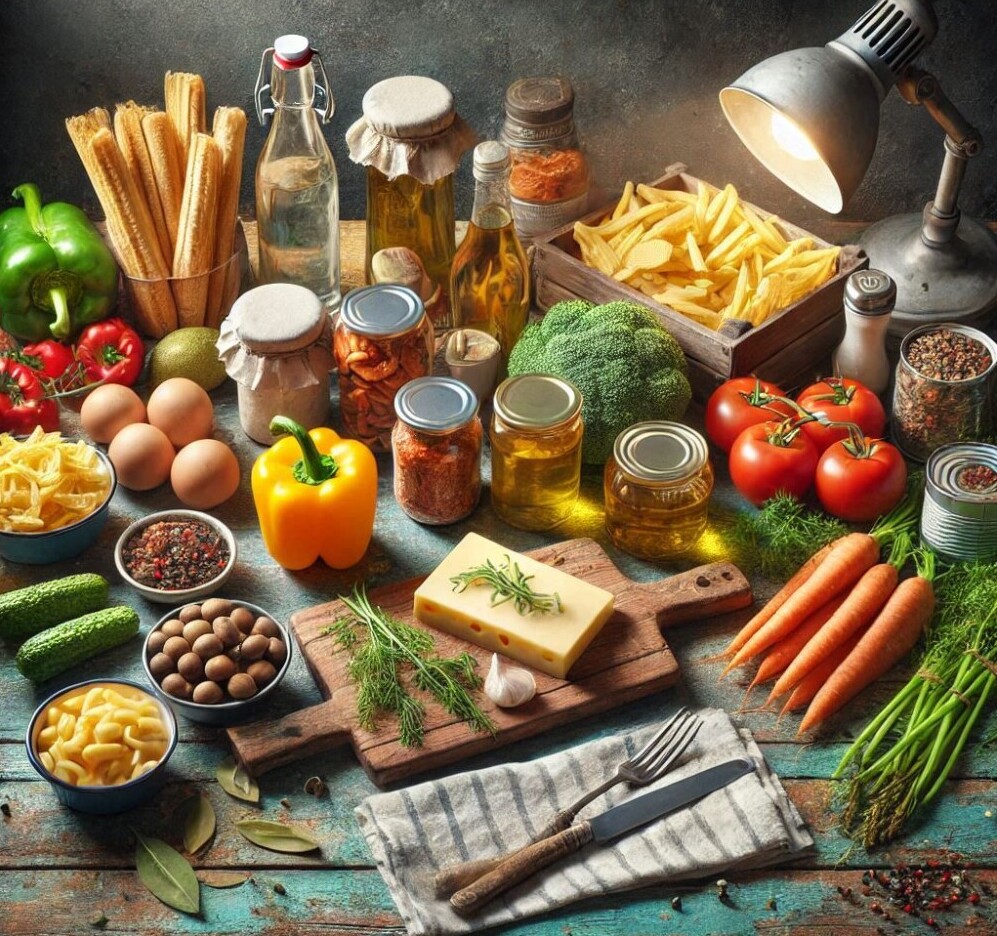
Processed foods aren’t always what you think. Often lurking in your pantry are items you might not consider processed at first glance. This can include things like certain breads, sauces, and even some canned goods. Understanding what qualifies as processed is the first step in cleaning up your diet.
There’s a lot of confusion about what makes a food processed. It doesn’t just mean the instant noodles or the cookie packets. Sometimes, foods we perceive as healthy also have hidden processing involved. This tag can go unnoticed due to clever marketing and packaging that emphasize ‘natural’ or ‘organic’.
Reading labels can be tricky. Companies use ‘natural’ flavours, even on things that are far from nature. Prioritize spotting long ingredient lists, especially those with unrecognizable names, unless they’re experimental new superfoods! Good rule of thumb: if you can’t pronounce it, might want to put it back. Eating clean starts with knowing what you’re actually eating.
Misleading packaging also plays a big role in our kitchen decisions. Terms like ‘light’, ‘low-fat’, or ‘sugar-free’ are often slapped on foods that are heavily processed. The front of the package is designed to attract; the real information, the not-so-pretty truth, is usually hidden in the small print on the back.
By getting into the habit of scrutinizing your pantry through these lenses—understanding labels, questioning marketing claims, and identifying strange ingredients—you’re well on your way to transforming your pantry into a healthier hub.
The Health Impact of Processed Foods
Processed foods often bring more than just empty calories; they can sneak in unnecessary chemicals and unhealthy fats that might affect your health long-term. Having a pantry full of such items can lead to higher risks of conditions like obesity, cardiovascular diseases, and even mood swings.
It’s crucial to understand that not all processing is bad. There’s a world of difference between minimally processed foods, like frozen veggies or pre-washed salad greens, and ultra-processed options like ready-to-eat meals or packaged snacks. The latter usually contains additives like preservatives and artificial flavours that can trick your senses and cravings, while offering little nutritional benefit.
Our bodies aren’t always great at processing synthetic additives. These can lead to digestive issues and metabolic slowdowns. It’s like putting the wrong fuel in your car; you’ll get nowhere fast. Being aware of these potential risks means you’re better equipped to make healthier dietary decisions.
The heart of the matter is knowing what these additives and preservatives do once inside your body. Beyond simply reading their names on labels, understanding their impacts can encourage a more cautious and informed approach to consumption, nudging you towards a cleaner lifestyle compared to blindly grabbing the familiar.
For a healthier lifestyle, aim to fill your pantry with foods that are closer to their natural state. Fresh fruits, whole grains, and nuts are fantastic staples. This won’t just benefit your waistline but can significantly improve your energy levels and mental well-being as well.

Decoding Food Labels: Ingredients and Nutrition Facts
Reading food labels can sometimes feel like deciphering a foreign language, but it’s a skill worth mastering for better health. Start by glancing at the ingredients list, where items are listed in order of their predominance in the product. This means the first couple of ingredients make up most of the food, so if sugar is near the top, it’s a red flag.
Artificial additives and preservatives often hide under unfamiliar names. Mono- and diglycerides, high fructose corn syrup, and sodium benzoate are common additions that serve specific purposes like extending shelf life or enhancing flavour, but they also indicate a processed product.
Simplifying this process for your family means looking for whole ingredients, things you’d find in your kitchen. Labels that detail whole grains, spices, or recognizable vegetables usually point to lesser-processed options. A shorter ingredient list typically means fewer additives.
Nutrition facts panels offer a wealth of information too. Pay attention to serving sizes—a common trap is eating what looks like one serving, only to realize it’s portioned as two or three on the label. Also, keep an eye on daily values for fats, sodium, and sugars, aiming for lower percentages in these categories.
By spending a few extra seconds analyzing these labels, you’re making a conscious decision to prioritize your well-being. Over time, this habit becomes second nature, and the rewards are definitely worth the initial learning curve.
Practical Steps to Purge Your Pantry
Revamping your pantry doesn’t have to be a daunting task. Start by creating a checklist of the usual suspects, like instant meals, sugary cereals, and snacks with a bunch of ingredients you can’t pronounce. These are typically heavy on processing and light on nutrition.
Once you’ve identified the foods that don’t fit with your new healthier approach, it’s time to remove them. This doesn’t mean waste. Foods that are unopened or within date can be donated to your local food bank. This way, you’re minimizing waste while supporting others.
Shopping smarter helps to avoid restocking your pantry with processed foods. Farmers’ markets and local food stores offer fresh produce that’s often more affordable and better for you. Plus, supporting local businesses is a nice bonus.
Try replacing processed items with healthier alternatives. For snacks, go for nuts, seeds, or dried fruits. For meals, aim for whole grains like quinoa or brown rice instead of instant versions. Cooking from scratch using whole foods can also be a rewarding and healthier approach.
Achieving a healthier pantry means creating a ripple effect throughout your household. When your shelves are stocked with nutritious foods, you’re more likely to make better eating choices, contributing to improved energy levels and well-being overall.
Transitioning to a Whole Foods Lifestyle
Whole foods are the superheroes of a healthy diet, offering more nutrients without the sneaky additives you’ll find in processed options. These foods, close to their natural form, are packed with vitamins and minerals that support your overall well-being.
Diving into a whole foods lifestyle doesn’t mean giving up on deliciousness. Plenty of family-friendly recipes swap processed ingredients for natural ones without sacrificing flavour. Think homemade veggie pizzas, oven-baked sweet potato fries, or fruit smoothies as breakfast boosts.
Switching over doesn’t have to break the bank either. Planning meals around seasonal produce can actually keep costs down. Plus, using what’s in season often means you’re getting the freshest and healthiest options available.
Transitioning gradually is key. No need to overhaul everything overnight. Start by integrating more fruits and veggies into your meals and gradually phasing out the highly processed snacks. Simple swaps like switching to whole grain bread or making salad dressings at home can make a big difference.
To maintain this shift, involve the whole family in meal planning and preparation. Kids are more likely to eat what they help to cook, and it becomes a fun way to educate them on making healthier choices. These lifestyle changes, slowly but surely, become second nature, leading to lasting benefits for everyone involved.
Cheers!
Ela

